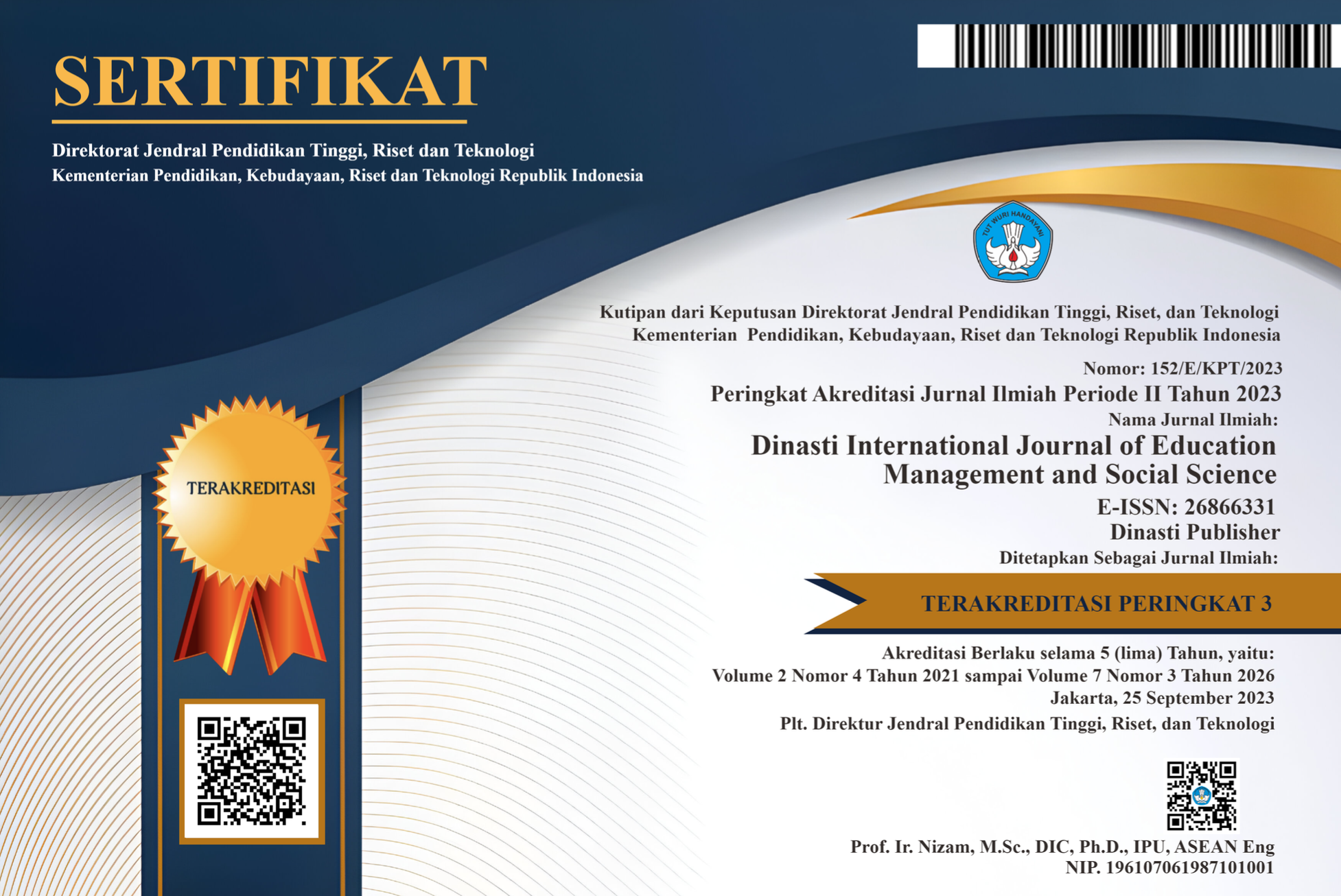CUSTOMER SATISFACTION IN POSTGRADUATE PROGRAM THROUGH INCREASED PERCEIVED VALUE
DOI:
https://doi.org/10.31933/dijemss.v3i1.1043Keywords:
Perceive value {functional value (want satisfaction & price/quality), epistemic value, image, emotional value, social value} and Customer satisfactionAbstract
This research is a continuation of previous research conducted by Gaston LeBlanc and Nha nguyen, 1999, a survey of the dimensions that affect the perceived value, and a study conducted by Gordon HG McDougall, Terrence Levesque (2000) regarding the relationship between perceived value and customer satisfaction. It encouraged the author to conduct further research to see the effect of the perceived value dimensions on customer satisfaction, which is applied to universities that the author is managing. This study aims to determine the impact of postgraduate students' assessments on what they feel about the college activities they are undergoing with the satisfaction they feel. and explore the dimensions of perceived value that determine and cause consumers to feel satisfied. Based on the tests that have been carried out, it turns out that from the 6 dimensions, only 4 sizes directly influence customer satisfaction. This is supported by the results of the hypothesis testing of these four dimensions that it has a t-value greater than t table.
References
Bentler, PN (1993), "EQS: Structural Equation Program Manual". Los Angeles, CA: BMDP Statistical Software.
Cronbach, L, J. (1951). Coefficient Alpha and The Internal Structure of Test, Psychometrics, 16, 297-334.
Desarbo. S Wayne, Jedidi Kamel, Sinha Indrajit (2001). Customer Value Analysis in a Hetrogenous Market. Strategic Management Journal vol 22.
Dodds William B (2002). The Effect of Perceived and Objective Market Cues on Consumers' Product Evaluations. Marketing Bulletin no 13 article 4.
Egelhoff Tom (2003). Product Price: How To Show The Customer What You're Worth. Smalltown marketing.
Egggert Andreas, Ulaga Wolfgang (2002). Customer perceived value: a substitute for satisfaction in business markets?. Journal of business & Industrial Marketing vol 17 no 2/3.
Giese Joan L, Cote Joseph A (2002). Defining Consumer Satisfaction. Academy of Marketing Science vol 2000 no 1.
Grot John C, Dye Richard T (1999). Service quality: guidelines for marketers. Managing Service Quality vol 9 no 5.
Guilford, JP (1954), Psychometric Methods (2nd Edition), New York: McGraw-Hill.
Hair, Joseph P. Jr., Rolph E. Anderson, Ronald L. Tatham, & William C. Black. (1995), “Multivariate Data Analysis with Readings. 3rd edition. New Jersey: Prince Hall.
Hadi, Handito (2003). Don't Just Win Compete. Jakarta : PT Intisari Mediatama.
Hadi, Handito, Sanusi Budiharto, Tanjung Nini (2003). Don't Just Service. Jakarta : PT Intisari Mediatama
Hermawan, Asep (2003). Practical Guide to Business Research Methodology. Jakarta: LPFE Trisakti University.
Jöreskog, Karl & Sorbom, Dag. (1999), “Lisrel 8: User's Reference Guide”, 2nd edition. Chicago: Scientific Software International, Inc.
Kamal Zulfa (1999). Behavioral Consequences of Customer Satisfaction. EKOBIS vol 1, no 1.
Laroche Michel (1996). Seminar in consumer research: Consumer Satisfaction in Modern Marketing
LeBlanc Gaston, Nguyen Nha, (1999) “Listening to the customer's voice: examining perceived service value among business collage students”, international journal of education management, volume 13, no 4,.
Palacio, Asuncion Beerli, Meneses, Gonzalo Diaz, Pedro J. Perez perez, (2002) “The configuration of the university image and its relationship with the satisfaction of students”, journal of educational administration volume 40, no 5.
Patric,. F James, (2002) “Development of a multi-dimensional scale for measuring the perceived value of a service”, journal of leisure research, vol 34, no 2.
Patrick James F (2002). Development of a Multi-Dimensional Scale for Measuring the Perceived Value of a Service. Journal of leisure research vol 34 no 2
Sweeney Jillian C, Geoffrey N Soutar (2001). Consumer Perceived value: The development of a multiple item scale. Journal of Retailing. Vol 77.
Downloads
Published
How to Cite
Issue
Section
License
Authors who publish their manuscripts in this journal agree to the following conditions:
- The copyright on each article belongs to the author(s).
- The author acknowledges that the Dinasti International Journal of Education Management and Social Science (DIJEMSS) has the right to be the first to publish with a Creative Commons Attribution 4.0 International license (Attribution 4.0 International (CC BY 4.0).
- Authors can submit articles separately, arrange for the non-exclusive distribution of manuscripts that have been published in this journal into other versions (e.g., sent to the author's institutional repository, publication into books, etc.), by acknowledging that the manuscript has been published for the first time in the Dinasti International Journal of Education Management and Social Science (DIJEMSS).















































